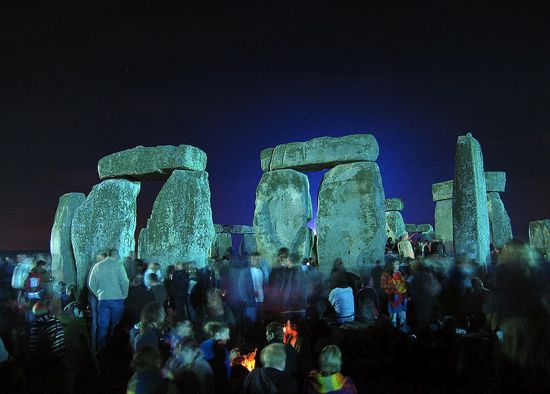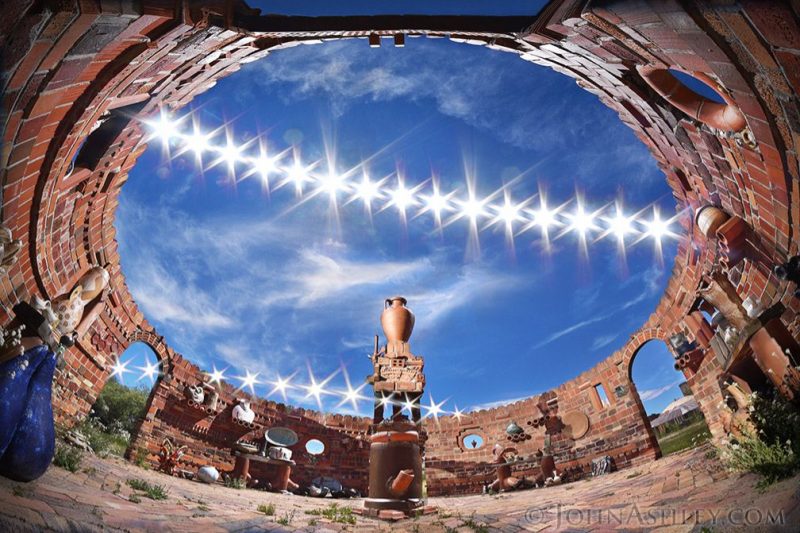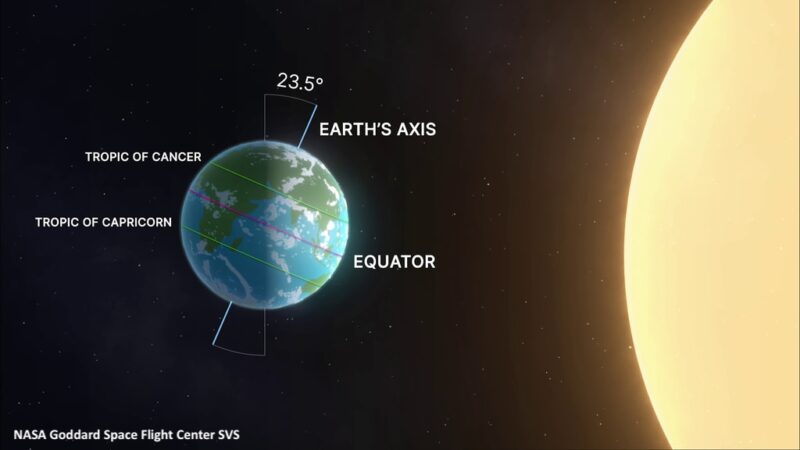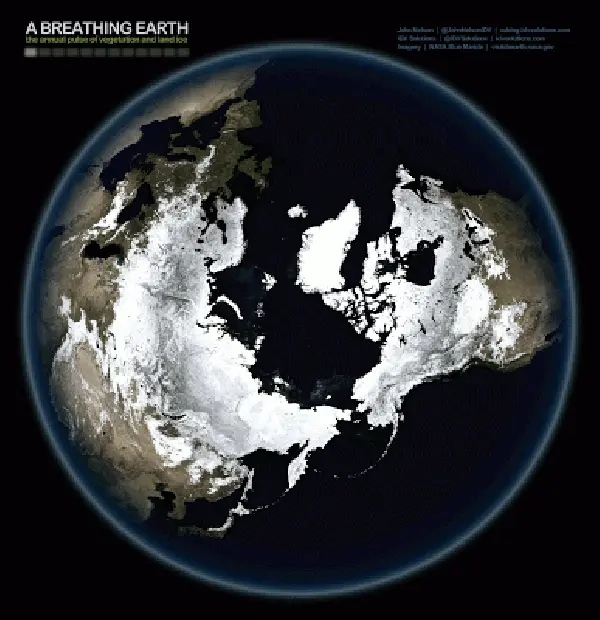
June solstice in 2024
This year’s June solstice is the earliest in 228 years. The solstice arrives at 20:51 UTC on June 20, 2024. The last time the solstice arrived earlier than this was in 1796, when it occurred at 17:45 UTC on June 20.
When is it? A solstice isn’t a whole day. Instead, it’s the moment when the sun is farthest north in our sky. In 2024, the solstice moment will fall at 20:51 UTC (3:51 p.m. CDT) on Thursday, June 20.
What is it? At the June solstice, the sun reaches its northernmost point. This point is on the celestial Tropic of Cancer, a parallel around the sky, 23.5 degrees north of the celestial equator. At this solstice, the Northern Hemisphere is most tilted toward the sun, by the maximum angle of 23.5 degrees. Conversely, the south is most tilted away, by the same amount.
What are its main effects? At the June solstice, no matter where you are on Earth, the sun rises and sets farthest north on your horizon. The sun is directly overhead at local noon as viewed from the Tropic of Cancer. Throughout the Northern Hemisphere, the sun is high in the sky and closest to being overhead at local noon.
What about day length?: For us in the Northern Hemisphere, the June solstice marks the shortest nights and longest days of the year. For the Southern Hemisphere, however, it marks the longest nights and shortest days. After this solstice, the sun will begin moving southward in our sky again.
June 21 evening: Full Strawberry Moon near the Teapot
What is a solstice?
Ancient cultures knew that the sun’s path across the sky, the length of daylight and the location of the sunrise and sunset all shifted in a regular way throughout the year.
With this in mind, they built monuments such as the ones at Stonehenge in England and at Machu Picchu in Peru to follow the sun’s yearly progress.
Today, we know that the solstice is caused by Earth’s tilt on its axis and by its orbital motion around the sun.
The Earth doesn’t orbit upright with respect to the plane of our orbit around the sun. Instead, our world is tilted on its axis by 23 1/2 degrees. Through the year, this tilt causes Earth’s Northern and Southern Hemispheres to trade places in receiving the sun’s light and warmth most directly.
So it’s Earth’s tilt – not our distance from the sun – that causes winter and summer. In fact, our planet is closest to the sun in January, and farthest from the sun in July, during the Northern Hemisphere summer.

Signs of the June solstice in nature
Where should you look? Everywhere.
For all of Earth’s creatures, nothing is so fundamental as the length of the day. After all, the sun is the ultimate source of almost all light and warmth on Earth’s surface.
If you live in the Northern Hemisphere, you might notice the early dawns and late sunsets, and the high arc of the sun across the sky each day. You might see how high the sun appears in the sky at local noon. And, also be sure to look at your noontime shadow. Around the time of the solstice, it’s your shortest noontime shadow of the year.
If you’re a person who’s tuned in to the out-of-doors, you know the peaceful, comforting feeling that accompanies these signs and signals of the year’s longest day.

Is the June solstice the first day of summer?
No world body has designated an official day to start each new season, and different schools of thought or traditions define the seasons in different ways.
In meteorology, for example, summer begins on June 1. And every schoolchild knows that summer starts when the last school bell of the year rings.
Yet June 21 is perhaps the most widely recognized day upon which summer begins in the Northern Hemisphere and upon which winter begins on the southern half of Earth’s globe. Although, the June solstice can fall on June 20 or 22. Indeed, there’s nothing official about it, but it’s such a long-held tradition that we all recognize those dates as the June solstice.
It has been universal among humans to treasure this time of warmth and light.
Stonehenge
For us in the modern world, the solstice is a time to recall the reverence and understanding that early people had for the sky. Some 5,000 years ago, people placed huge stones in a circle on a broad plain in what’s now England and aligned them with the June solstice sunrise.
We may never comprehend the full significance of Stonehenge. But we do know that knowledge of this sort wasn’t limited to just one part of the world. In fact, around the same time Stonehenge was being constructed in England, two great pyramids and then the Sphinx were built on Egyptian sands. If you stood at the Sphinx on the summer solstice and gazed toward the two pyramids, you’d see the sun set exactly between them.

Why doesn’t the longest day have the hottest weather?
People often ask:
If the June solstice brings the longest day, why do we experience the hottest weather in late July and August?
This effect is called the lag of the seasons. It’s the same reason it’s hotter in mid-afternoon than at noontime. Essentially, Earth just takes a while to warm up after a long winter. Even in June, ice and snow still blanket the ground in some places. The sun has to melt the ice – and warm the oceans – and then we feel the most sweltering summer heat.
Ice and snow have been melting since spring began. Meltwater and rainwater have been percolating down through snow on tops of glaciers.
However, the runoff from glaciers isn’t as great now as it’ll be in another month, even though sunlight is striking the Northern Hemisphere most directly around now.
So wait another month for the hottest weather. It’ll come when the days are already beginning to shorten again, as Earth continues to move in orbit around the sun, bringing us closer to another winter.
And so the cycle continues.


Bottom line: The 2024 June solstice will happen on June 20 at 20:51 UTC. That’s 3:51 p.m. CDT in North America. This solstice – the beginning of summer in the Northern Hemisphere – marks the sun’s most northerly point in Earth’s sky.











